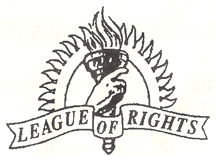A Common Sense Old School Doctor on Dealing with Bird Flu on Poultry Farms, By Mrs Abigail Knight (Florida)
The Midwestern Doctor, in the article "The Grotesque Bird Flu Scam and How to Actually Treat Colds and Flus,"critically examines the pandemic prevention industry, highlighting systemic issues that undermine public health efforts. The piece contends that this industry, despite receiving substantial funding, often fails to deliver effective solutions, suppresses alternative therapies, and, paradoxically, may contribute to the very pandemics it aims to prevent.
A central critique focuses on the industry's reliance on animal experimentation. The author argues that many of these experiments are both cruel and unnecessary, raising ethical concerns and reflecting a broader mentality within modern medical practices. Notably, some advocacy groups have begun to challenge these practices by linking them to significant financial waste, suggesting that funds allocated to such research could be better utilized elsewhere.
The article also scrutinizes current strategies employed to combat avian influenza. Despite the allocation of billions of dollars and the culling of over a hundred million birds, these efforts have primarily resulted in increased egg prices without effectively addressing the root causes of the disease. This outcome raises questions about the efficacy and efficiency of such large-scale interventions.
Furthermore, the author emphasises that while modern medicine often deems viruses "incurable," numerous effective treatments have existed for over a century. These therapies, often over-the-counter and unpatentable, have been used successfully for severe illnesses and can rapidly alleviate common viral conditions like colds and flus. The article advocates for a re-evaluation of these traditional treatments, suggesting they offer viable alternatives to current medical practices.
The piece calls for a critical reassessment of the pandemic prevention industry, urging a shift towards more ethical research practices and the inclusion of time-tested treatments in modern medical protocols. By addressing these systemic issues, the author suggests that public health efforts can become more effective and aligned with both ethical standards and practical outcomes.
There were suggestions made as to how to effectively deal with bird flu on poultry farms:
"I believe the following approaches should be seriously considered.
1. Farmers, especially those raising their birds in healthier conditions, should have the option to allow bird flu to sweep through their flocks and select for the birds that survive.
2. There should be incentives (e.g., subsidies) that support raising birds in cleaner and less tightly packed conditions (as there birds are much more resistant to the spread of bird flu) rather than funnelling that money to the large corporations that keep their birds in unhealthy conditions which encourage the spread of disease.
3. For over a century, it has been recognized that exposing poultry to ultraviolet light reduced their likelihood of dying and increased their productivity (while many unnatural artificial lights did the opposite). Likewise, it's well known that ultraviolet light effectively inactivates various pathogens, including viruses.
For this reason, one of the most effective ways to stop viral pandemics is to simply put (safe) UV lights indoors as this rapidly disinfects the air (or surfaces) and hence stops the spread of viruses (which in turn makes it highly frustrating a variety of easy to deploy UV light systems were never used to stop the spread of COVID-19—while we locked the country down and deployed a variety of disruptive and mostly ineffective methods to slow the spread).
Note: even when not all of a virus is inactivated, immense benefit still results as susceptibility to a virus is largely determined by the infectious dose (as with smaller ones, the immune system has time to develop a robust response to it, whereas with larger ones, the host frequently gets overwhelmed before it can develop a robust immune response).
As such, I believe the most sensible approach to managing bird flu is to simply put UV lighting into chicken farms, an approach which fortunately is now beginning to be looked at as the existing approach has clearly failed.
Lastly, in addition to directly killing viruses, UV light generates ozone gas (which is directly germicidal). This suggests ozone (or another dilute disinfecting oxidative therapy such as chlorine dioxide or misted hydrogen peroxide) could potentially stop the spread of avian influenza. However, to the best of my knowledge, while this approach has been shown to work in farms for a variety of other non-viral infections and in the lab for avian influenza I do not know of any research where a diffused oxidative therapy (disinfectant) has been used to prevent the spread or severity of avian influenza in a flock."
https://www.midwesterndoctor.com/p/the-grotesque-bird-flu-scam-and-how


Comments